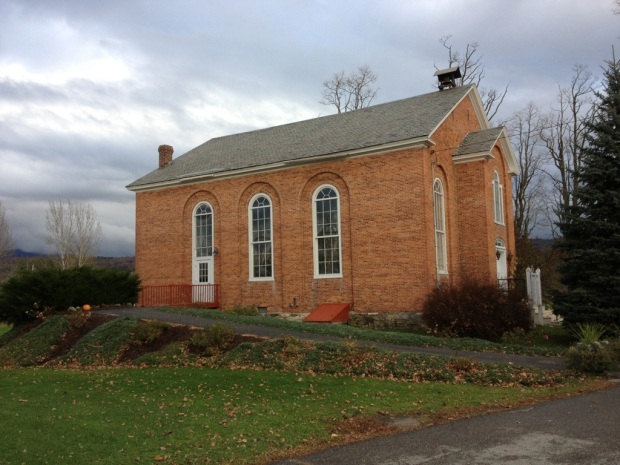Tag: 1836
Building Accessibility
Accessibility to historic buildings is often a necessary code upgrade, not to mention important to insure that everyone can enjoy the building. Inside we see chair lifts on railings, elevators, ramps. On the exterior we see elevator shafts and accessible ramps of all materials and interesting placements. Sometimes a ramp will block the facade or detail of a building. That is not to say that a building should not have a ramp, but perhaps more creative planning would help.
Consider the Leicester Meeting House (1836):

Leicester, VT. Can you see the ramp? It blends into the landscape. Note the red landscape and the window that was partially converted to a door.

Closer view. See the bridge from the ramp to the building. The railing and the bulkhead doors match.

Leicester, VT: 1836 Meeting House
What do you think? I think it’s one of my favorite ADA solutions that I’ve seen. The approach to the building on both sides is pleasant and open to the town green, neither the front or side hidden (an ADA entrance should not seem like a secondary entrance).
